Wonder
Avenue of the Baobabs, Madagascar
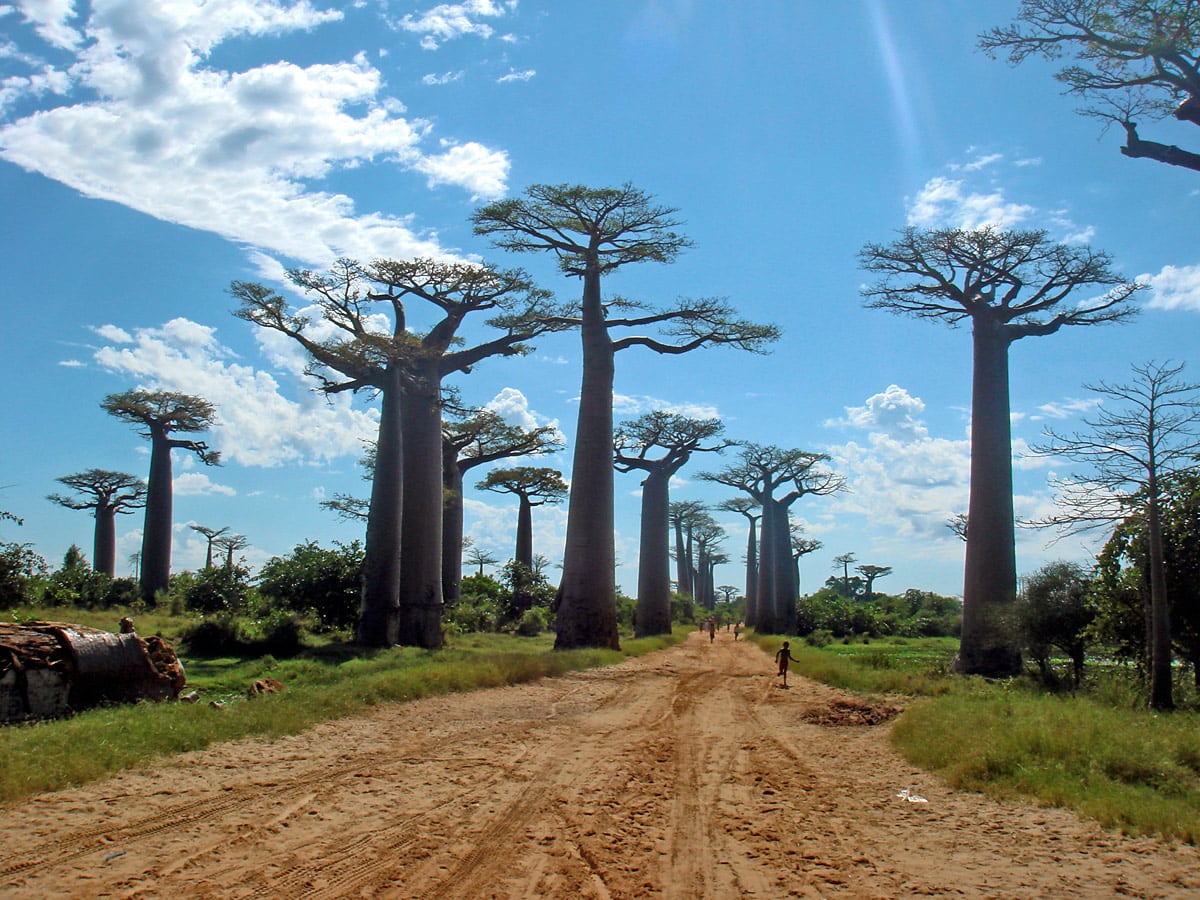
 In short
In short
Major part of people in the world have seen this sight – if not a photograph, then at least the versions of this view in the cartoon movie "Madagascar". Avenue of the Baobabs comes in the minds of many people when they hear the word – "Madagascar".
 43.8%
43.8%
GPS coordinates
Location, address
Area
Dominating species
Map of the site
If you see this after your page is loaded completely, leafletJS files are missing.
 In detail
In detail
Few trees, great fame
All the fuss goes about a small group of trees seen along some 260 m long segment of the road between Morondava and Belon’i Tsiribihina. Along the road grow some 20 – 25 enormous trees and in the surrounding meadows – approximately 25 more trees.
Of course, there are many more trees in this area – thousands of them. But elsewhere they do not form such a picturesque sight and are not that easy to access.
Avenue has gained international fame – and in sunny evenings hordes of tourists are seen wandering along this idyllic road and taking countless pictures.
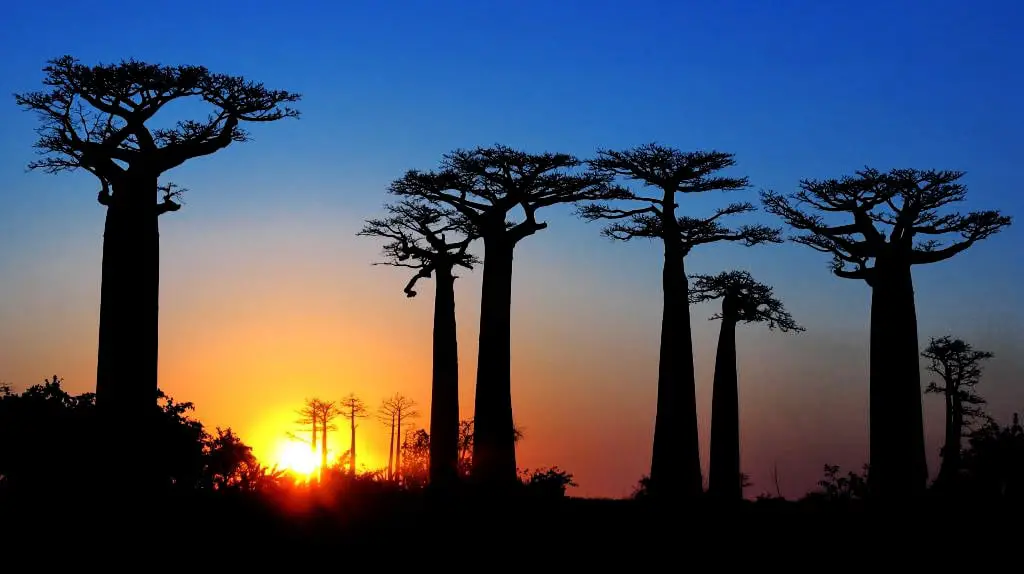
Mother of the forest
It might come as a surprise that most people in Madagascar have not seen such sights in their lifetime. Main "heroe" in the Avenue of the Baobabs – Grandidier’s baobab (Adansonia grandidieri) – grows only in the dry tropical forest of western Madagascar. Local people call them renala – "mother of the forest".
Grandidier’s baobab is endemic to Madagascar and is one of seven species of baobabs growing on the island. This is very tall baobab – height might exceed 30 metres. Champion of this species has yet to be found, but girth of these trees most certainly exceeds 20 metres. Well, Glencoe Baobab (Adansonia digitata) in South Africa had even a circumference of 46.6 metres (most likely – world champion of all trees), but, who knows – may be there is even a larger Grandidier’s babobab in Madagascar.
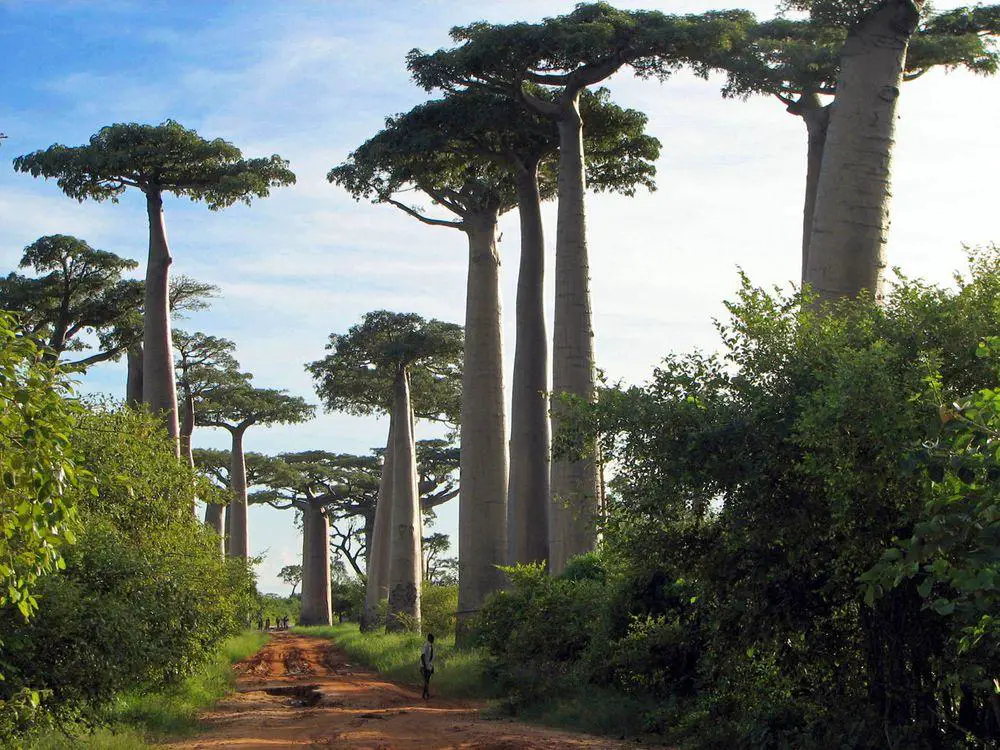
Endangered species
Unfortunately this magnificent tree becomes increasingly rare. It grows in the unique dry, deciduous tropical forest of western Madagascar. These forest are eliminated for agricultural needs to feed the ever increasing number of inhabitants on this island.
Grandidier’s baobabs are much revered by locals and left standing in the clearcuts – just like oaks in some European countries. These trees also withstand the fire better than other plants.
It is considered also that these trees have suffered from the extinction of giant animals of Madagascar – giant lemurs and elephant birds. Those large creatures could swallow the seeds and facilitate their germination by passing through the digestive tract. Smaller animals can’t swallow these large seeds. Nowadays there are much fewer young baobabs. Earlier trees were spread by animals – now only by the water – and most often there is no water near the trees.
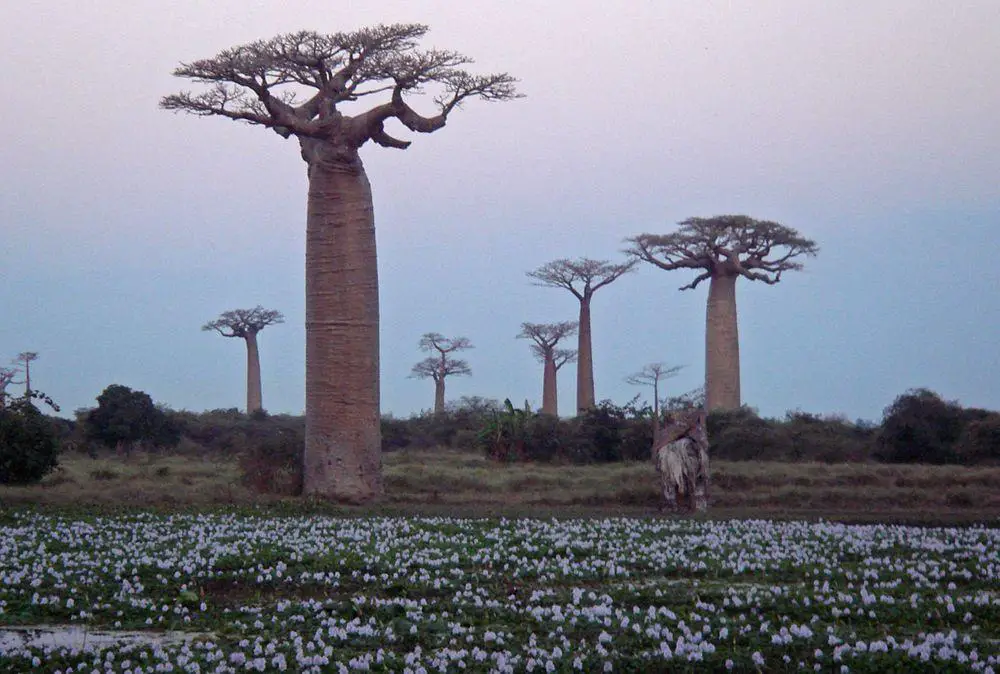
First natural monument in Madagascar
In 2007 the Avenue of the Baobabs was declared as the first protected natural monument in Madagascar. (1)
This is truly magnificent place to be No.1. natural monument in Madagascar – but… this landscape is not entirely natural.
Trees were born in natural, primeval forest – and were growing in it for many centuries (now they are some 800 years old).
In the early 20th century tremendous change took place – the forest was cut and just the much revered baobabs were left standing.
It seems – trees are not happy with this change and from time to time one or another tree falls down. One reason is root rot, caused by the permanently wet rice paddies. Baobabs have used to dry soil with annual wet season. Trees may be falling also due to the winds – these tall trees were grown in dense forest and now are exposed to harsh cyclones. Earlier their bark was also stripped – for roofing.
Not too far – some 7 km along the road to the north-west – is located one more amazing monument related to baobabs – the legendary Baobab Amoureux, two baobabs of another species twisted together.
 Linked articles
Linked articles

Wonders of Madagascar
Madagascar is affluent with surprising natural landmarks – created both by geological processes and living nature. Highlights of Madagascar are karst features, unusual ecosystems, and gorgeous and rare gemstones.
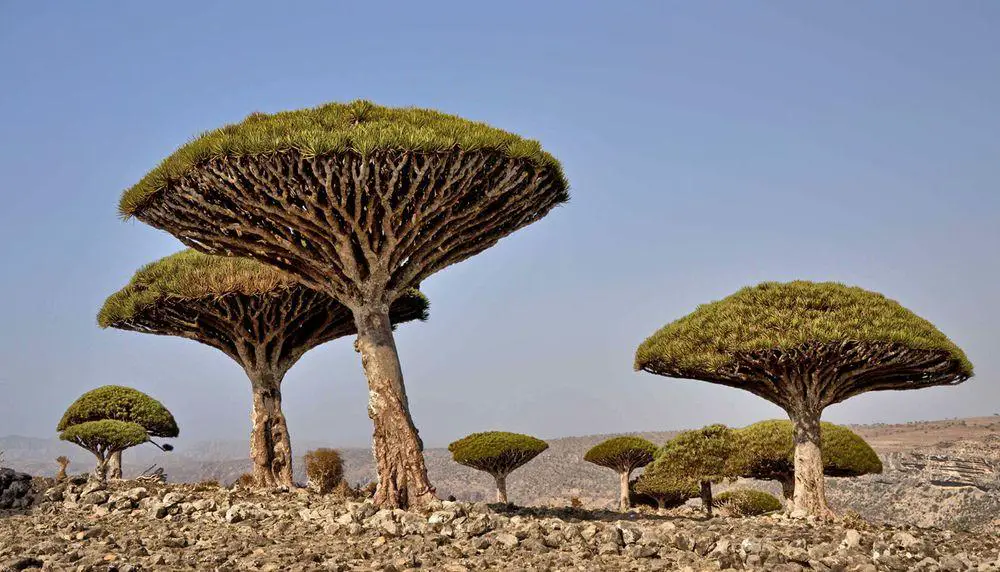
Ecosystems
Biotope is a rather small area with uniform environmental conditions and a specific community of life. Wondermondo describes biotopes and ecosystems which have striking looks, look very beautiful, or have other unusual characteristics.
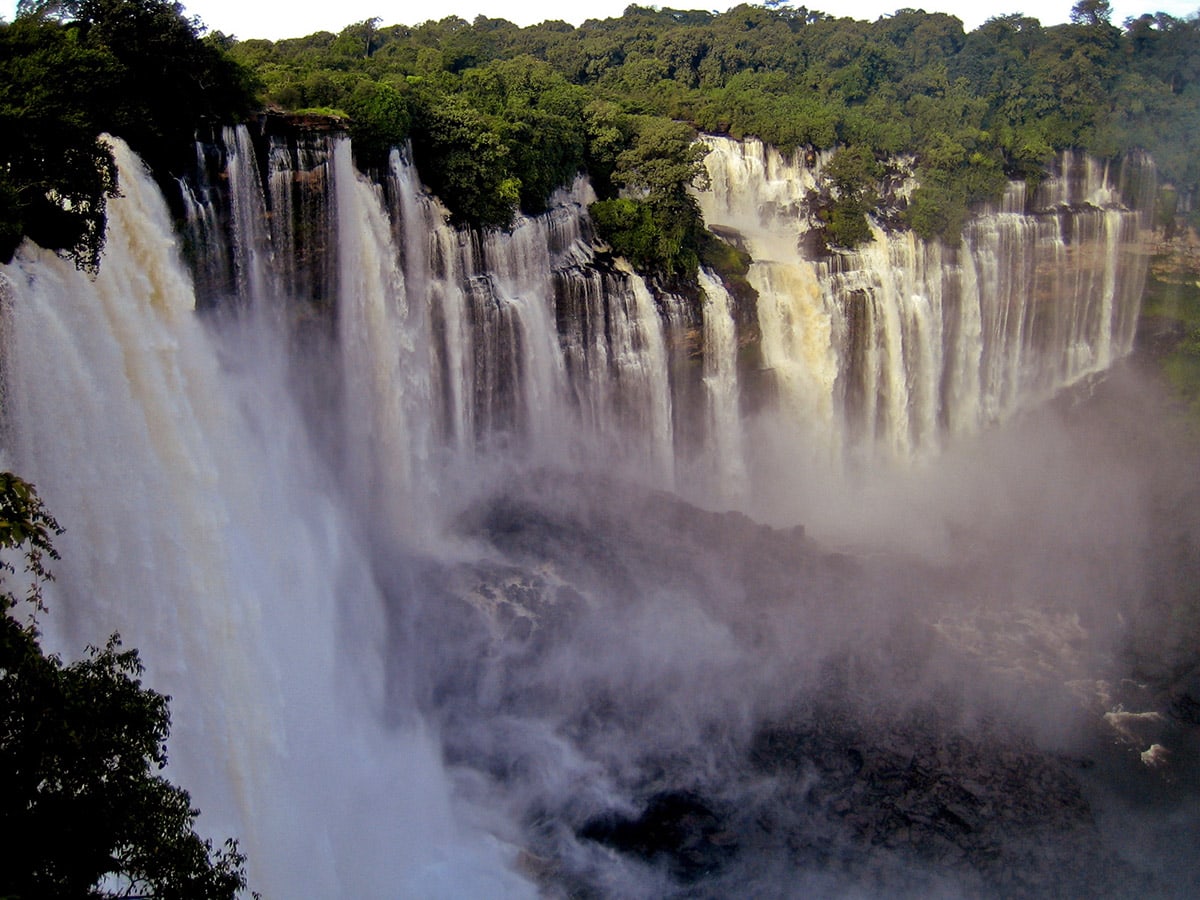
Wonders of Africa
Africa has many outstanding wonders and some of the most surprising ones are the heritage of Egyptian civilization, the vernacular architecture of the Sahel region, tropical ecosystems, and others.
 Recommended books
Recommended books
The Remarkable Baobab
Standing tall on the sunburned plains of Africa and Australia, baobabs may be the oldest life forms on the planet. Many of the specimens still standing today have been around for well over two thousand years. Tremendous in size and bizarre in appearance, they have provided food, medicine, and places of refuge and worship to countless peoples, even serving as prisons and tombs on occasion.
Madagascar (Bradt Travel Guide)
A new, thoroughly updated 12th edition of Bradt’s Madagascar, the leading and most comprehensive guide to this unique island nation, written by Hilary Bradt, who first visited in 1976 and has returned roughly 35 times, and Daniel Austin, who has visited 12 times and continues to travel there annually. Bradt’s Madagascar is by far the most thorough guide to the country in English and includes contributions from over 50 experts in a book that has been the most authoritative guide to the country for three decades.


